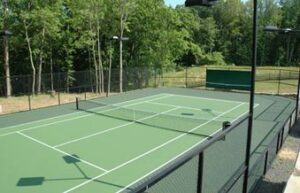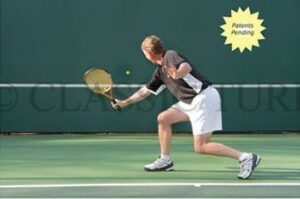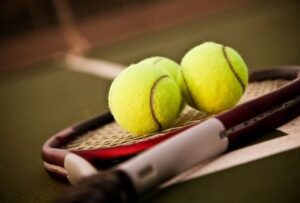 If you’re an aspiring tennis player, whether for fun or competition, you probably know that it takes much practice to become the player you’d like to be. After all, very few of us are natural athletes who excel at a sport like tennis the first time we pick up a racket.
If you’re an aspiring tennis player, whether for fun or competition, you probably know that it takes much practice to become the player you’d like to be. After all, very few of us are natural athletes who excel at a sport like tennis the first time we pick up a racket.
The Importance of Repetition
With tennis, repetition is supremely important. The more you do something, the more likely your brain will “code” it so it knows what to do the next time you try and do something like hit a forehand, backhand, or serve the ball. In essence, you have to develop “muscle memory,” to the point where your muscles and your brain work in tandem to repeat motor movements that help you win your game of tennis. Since muscles are dumb on their own, we have to make them smart by repeating a motion over and over. That way the brain recognizes that we care about a particular movement in such a way that it stores that movement as data to be used for survival– it becomes a survival skill we can acquire. Obviously, playing tennis isn’t about survival in the sense that we must do it to live, but for some players, tennis becomes just that– you know who you are!
Now tennis has some randomness to it. From the level of spin to the amount of bounce, tennis balls are somewhat unpredictable, which is what makes tennis a good challenge. Meanwhile, there are variables in height and pacing which make it an even more challenging game to master. Will your forehand ever be exactly the same for every hit? No. However, thanks to repetition, your brain and muscles start to figure out how to maximize each hit for your benefit.
Where can you practice your repetitive shots on the court? Ideally, you’ll make good use of the tennis backboard. It’s especially helpful when human partners aren’t available. The backboard is a board at the back of a tennis court which you hit balls off of, so it’s almost like having a partner. Using the board allows you to practice and refine your motor skills when it comes to playing tennis.
Selecting the Right Tennis Backboard
 Backboards can be made of brick, wood, plastics, fiberglass or other materials. Some manufacturers include Bakko, Court Master and Rally Master. They all make durable backboards– the kind you’d find on private home courts or at local tennis clubs. A lot of times tennis players use backboards to warm-up before matches. They also perform exercise drills off the backboard as well.
Backboards can be made of brick, wood, plastics, fiberglass or other materials. Some manufacturers include Bakko, Court Master and Rally Master. They all make durable backboards– the kind you’d find on private home courts or at local tennis clubs. A lot of times tennis players use backboards to warm-up before matches. They also perform exercise drills off the backboard as well.
Human partners can get tired, but backboards won’t. Some say they make ideal tennis partners. Players can use them to warm-up, practicing their forehands and backhands for 10 minutes. And they can do simulated match play, taking 20 seconds in between shots. More experienced players can decrease their rest time as they become better conditioned. Some players will even use specific 2 to 8 pound medicine balls that can bounce off the backboard in order to increase the intensity of their practice session workouts. Interestingly, people who use backboards in this manner often burn a lot of calories and may lose weight over time.
Rally Master Backboards from Classic Turf
 Classic Turf is known for tennis courts, basketball courts, and more. Classic Turf uses Rally Master backboards, which we consider to be the best backboards available in the industry. These solid polyethylene panels come with a 20-year warranty. Better yet, they can withstand the harshest of abuse, and they don’t deteriorate even in bad weather. Besides tennis balls, these backboards can handle soccer balls, basketballs, and more. They’re tough and durable.
Classic Turf is known for tennis courts, basketball courts, and more. Classic Turf uses Rally Master backboards, which we consider to be the best backboards available in the industry. These solid polyethylene panels come with a 20-year warranty. Better yet, they can withstand the harshest of abuse, and they don’t deteriorate even in bad weather. Besides tennis balls, these backboards can handle soccer balls, basketballs, and more. They’re tough and durable.
Rally Master backboards have their color molded right into the panel so thankfully there’s no peeling or scratching over time. Thanks to high quality construction, these panels don’t have dead spots or hollow voids. Upon impact, they’re relatively quiet, too– the noise level of a tennis ball hitting the panel is no louder than a ball hitting a racket.
Size-wise, Rally Master backboards come in 4’ x 10’ sections. Typically, a 12’ wide wall works well for one player, while some people choose a 16’ or 20’ wall for two players to use. For the record, 16’ walls are generally found on residential courts while the 20 footers end up at tennis clubs and schools.
Classic Turf’s backboards are available at a low price with fast delivery times. For more information, please contact Classic Turf Company of Woodbury, Connecticut at 1-800-246-7951.
